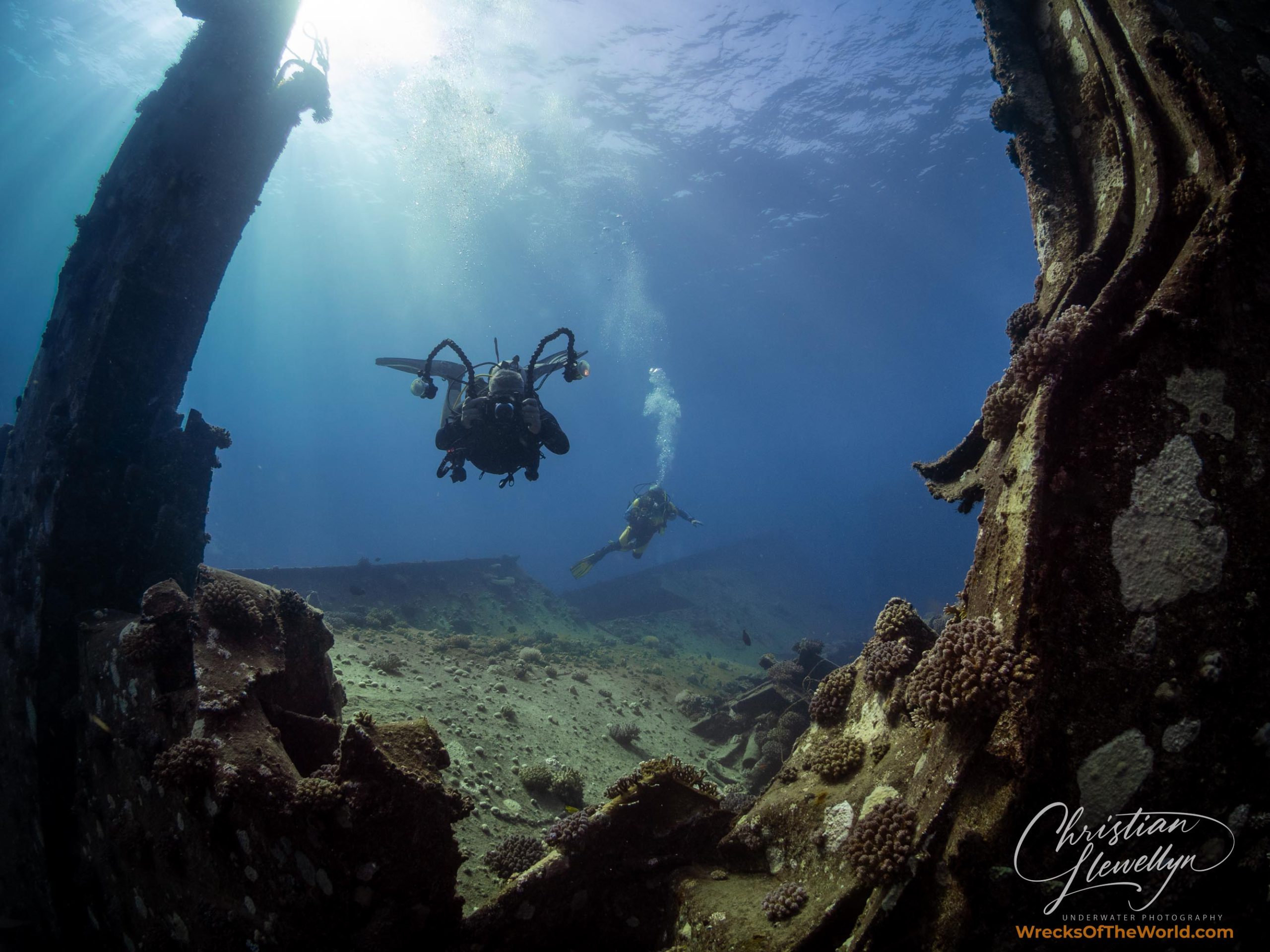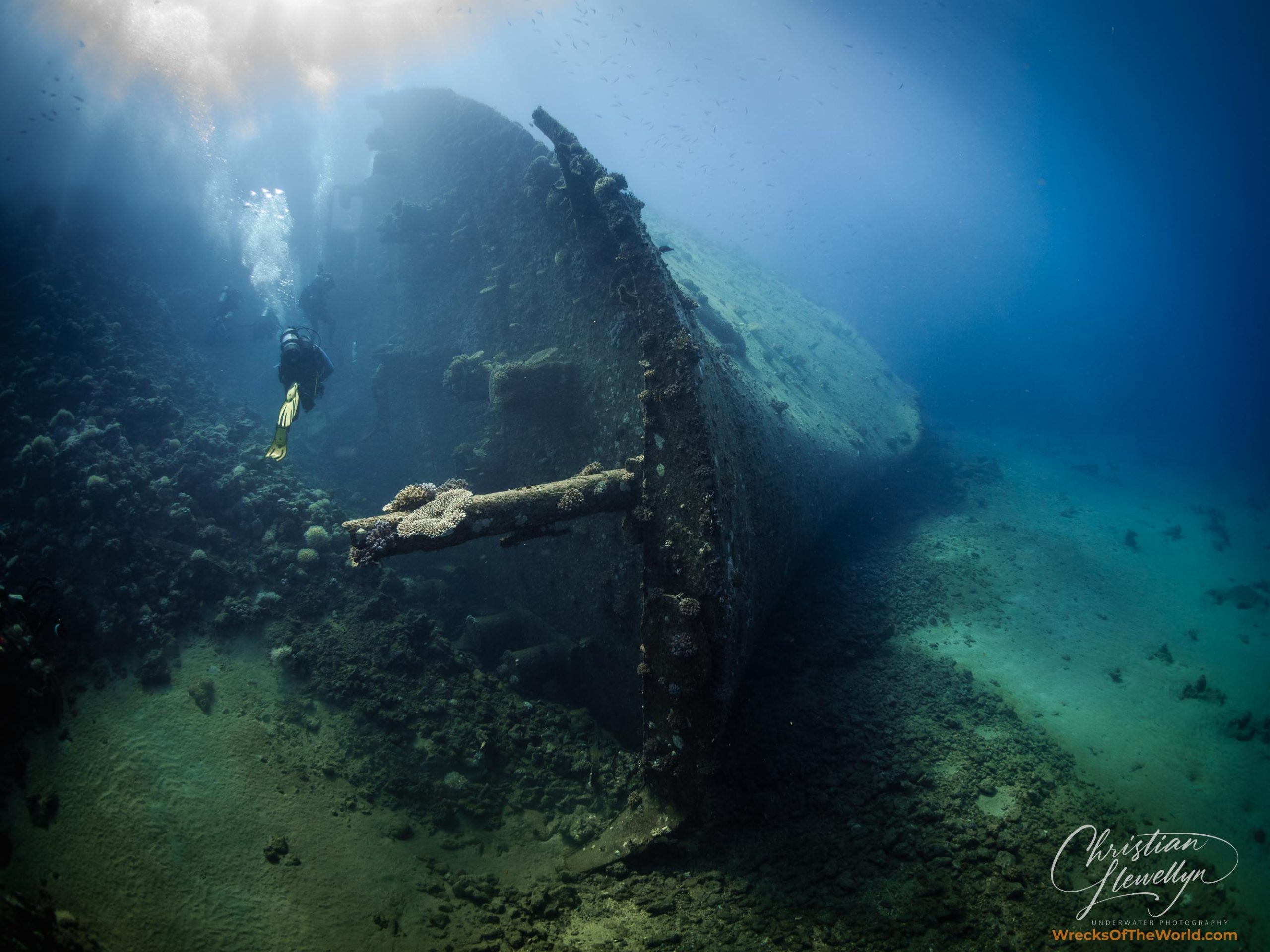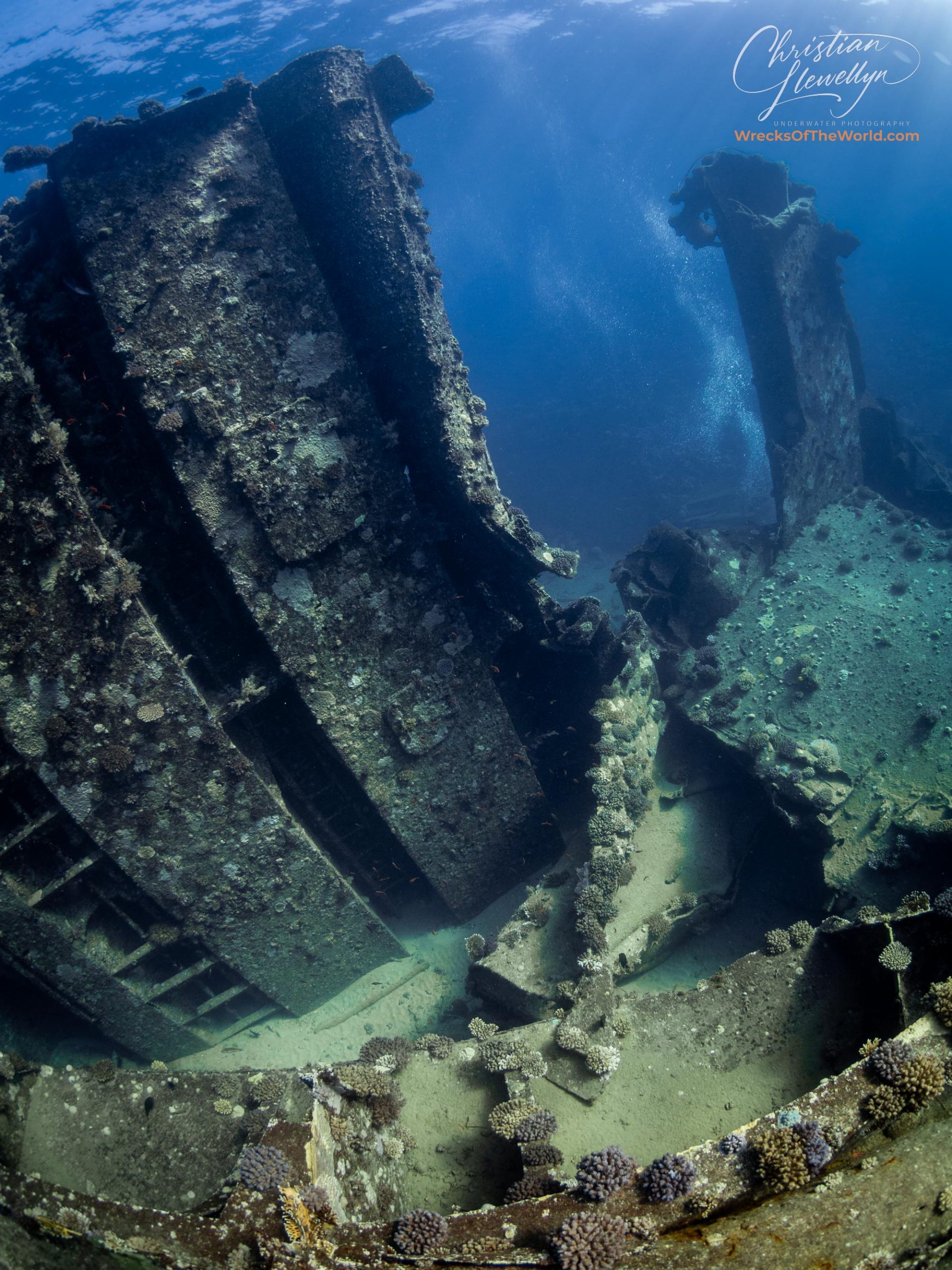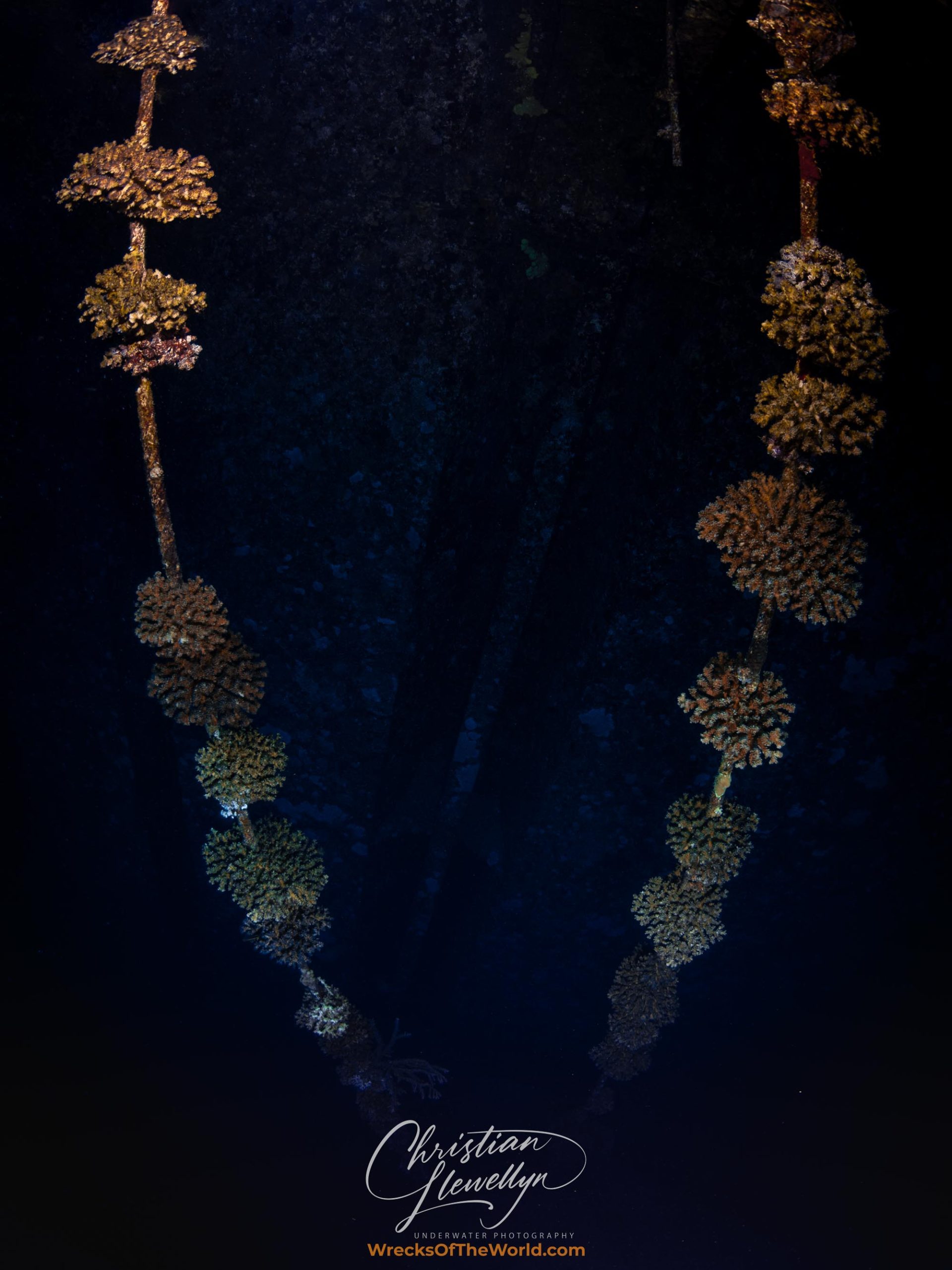Million Hope Wreck Dive: A Hidden Bounty Awaits You
- Written:
- By Christian Llewellyn
Some of the links on this page may be affiliate links. If you click on them and make a purchase, we may earn a small commission at no extra cost to you. This helps us continue our work—thank you for your support!
Introduction to the Million Hope Wreck wreck
Exploring the wreck of the Million Hope is an experience that leaves divers in a state of wonder. This imposing 174-meter cargo ship, which met its fate near the picturesque Strait of Tiran in 1996, stands as one of the largest and most easily accessible wrecks in the Red Sea. Unlike many sunken vessels that have surrendered completely to the depths, much of the Million Hope still breaks the surface, offering a striking silhouette against the azure blue waters. As divers navigate through this hauntingly beautiful site, they encounter a fascinating blend of history and vibrant marine life, where colorful corals cling to rusting steel and schools of fish dart playfully around the ship’s remains.

The Story Behind the Million Hope Wreck
Originally named Ryusei Maru and built in 1972 in Japan by either Koyo Dockyard or Imabari Shipbuilding Company, the Million Hope was designed to carry massive loads of bulk goods. Its transformation into a commercial vessel under the ownership of Aksonas Shipping Co Ltd. based in Limassol, Cyprus, marked its transition into transporting varied cargo including chemicals and phosphates. However, on June 20, 1996, after leaving Aqaba with 26,000 tonnes of chemicals onboard, the ship met its fate by grounding on a reef near Naqb, north of Sharm El Sheikh due to reported possibilities of a fire or poor weather conditions, leading to its sinking. Fortunately, all 25 crew members were safely rescued by Egyptian naval forces.
In the years following its sinking, the wreck of the Million Hope has settled upright near the reef, now enveloped by the waters of the Red Sea. Although not officially an artificial reef, the submerged vessel has become a sanctuary for local marine life, enhancing the underwater landscape and providing a unique dive site. Its easy accessibility and the dramatic scene it presents underwater make it a compelling site for divers interested in both the historical aspect and natural marine observations. While the specifics of the marine life around the wreck are not extensively documented, the structure itself plays a crucial role in the local aquatic ecosystem.

The Stats: Depth, Conditions & Accessibility
15m
Minimum Depth
25m
Maximum Depth
Boat Dive
Dive Type
20m
Visibility
Mar – Nov
Season
22°C - 28°C
Water Temp
Where Is The Million Hope Wreck?
The Million Hope is located near Sharm El Sheikh, a popular resort town in Egypt known for its clear waters and vibrant marine life, making it a prime location for diving. Access to the wreck is typically via boat from Sharm El Sheikh, which has a well-equipped marina that serves the numerous dive operations based there. The town is accessible by international flights to Sharm El Sheikh International Airport, which connects to major cities around the world. Travel within the region is facilitated by taxis, buses, and car rentals, making it easy to arrange trip to dive sites. Divers use local dive centers that offer trips to Million Hope, including arrangements for boats, guides, and equipment.
My Experience Diving The Million Hope Wreck

Embarking on the Million Hope wreck dive was an extraordinary journey that left an indelible mark on my underwater adventures. My excitement was palpable as we geared up, briefed by our knowledgeable dive guides from a local Sharm El Sheikh company known for their professionalism and safety-conscious approach. The entry into the Red Sea was a giant stride from the back of our spacious boat, plunging into the inviting, crystal-clear waters that the area is famed for.
Descending towards the Million Hope wreck, the visibility was exceptional, allowing us to glimpse the massive structure from a distance. The size of the wreck is impressive, resting majestically on the seabed. Navigating through the accessible parts, the dive guides expertly led us, ensuring we were safe while allowing us to explore significant sections. There’s something profoundly solemn and thrilling about floating through a piece of maritime history.
After exploring the contours and hidden corners of the wreck, our ascent was smooth, followed by a relaxed surface interval filled with excited chatter about the dive. The journey back to shore was serene, filled with reflections on the dive and views of the stunning Red Sea coastline. This dive not only allowed me to tick off a major bucket-list item but also deepened my appreciation for the underwater world and wreck diving.
My Experience Photographing the Million Hope Wreck
Diving and photographing the Million Hope wreck in the Red Sea was an exhilarating experience that left a profound impact on my understanding of underwater photography. The sheer size of the wreck, situated near Sharm El Sheikh, and the variety of marine life it attracts presented unique challenges and opportunities for a photographer. I used a DSLR in a waterproof housing with an appropriate wide-angle lens, which was crucial due to the immense scale of the shipwreck. The clear waters and the ambient light penetrating certain parts of the wreck created dramatic effects on the rusty textures and marine life, enhancing the hauntingly beautiful atmosphere of the dive.

What You’ll See: Wreck Features & Marine Life
Exploring the Million Hope wreck offers a dramatic glimpse into the underwater ecosystem that has claimed the ship as part of the seabed. Encrusted with coral, the wreck is a thriving habitat for a variety of marine life. Divers can expect to see schools of colorful fish darting through the nooks and crannies. Larger species, such as groupers and occasionally barracudas, are attracted to the shelter provided by the wreck’s massive structure. The visibility in this part of the Red Sea is typically excellent, enhancing every detail of the wreck’s architecture and its marine inhabitants.
Photographers, particularly those interested in ‘Million Hope wreck photography’, will find no shortage of captivating subjects, from the sweeping iron sides of the ship’s hull to the intimate encounters with marine life. Each dive around the wreck reveals different nuances of light and shadows, making each photograph a unique capture of this underwater wonder.

Recommendations for Diving the Million Hope Wreck
1. Verify your certification level is suitable for wreck diving, as wreck dives often require advanced or specialist training.
2. Conduct a thorough pre-dive briefing focusing on the layout of the wreck and potential hazards.
3. Equip yourself with appropriate dive gear, including a dive light to explore darker parts of the wreck.
4. Practice good buoyancy control to avoid disturbing sediment, which can reduce visibility.
5. Maintain a safe distance from the wreck to prevent accidental collisions and entanglements.
6. Use a dive line or reel if penetration into the wreck is involved, ensuring a secure path back to the entrance.
7. Always dive with a buddy and maintain close communication, especially in low visibility conditions.
8. Monitor your air supply regularly, as wreck dives can be more consuming than open water dives.
9. Plan your dive with conservative limits to allow for a safe ascent time, including safety stops.
10. Check local diving conditions and weather forecasts prior to the dive to ensure safety.
Tips for Photographing the Million Hope Wreck
1. Use a wide-angle lens: The vastness of the Million Hope wreck demands a wide-angle lens to capture its impressive length and breadth.
2. Manage natural light: Dive during times when natural light is optimal, near midday, to use the sunlight filtering through the water for natural illumination.
3. Focus on details: While the size of the wreck is impressive, capturing close-ups of marine life and the textures of the ship can make for compelling compositions.
4. Maintain buoyancy control: Good buoyancy is critical not just for safety, but also for stabilizing your shots in the water’s current.
5. Invest in a good strobe: Lighting is crucial in underwater photography. A powerful strobe can help illuminate the darker parts of the wreck.
6. Consider safety: Always be aware of your surroundings and depth, especially given the Million Hope wreck’s considerable depth and size.
7. Research the shipwreck: Understanding the history and layout of the Million Hope can help you find interesting angles and aspects of the wreck to focus on, enhancing your photographic narrative.
Practical Dive Info & Booking a Trip
For those planning to embark on the Million Hope wreck dive in Sharm El Sheikh, I recommend booking with reliable local operators such as Ocean College Diving or Sinai Divers. These operators are well-regarded for their professionalism and commitment to safety. The estimated cost of a dive tour ranges from £100 to £150, depending on the depth and duration of the dive, as well as the added facilities like photography guides. Conservation is crucial; ensure minimal contact with the structure to prevent erosion and disturbance to the marine life inhabiting the wreck. Remember, every diver has a role in preserving these underwater wonders for future generations.
My Rating & Final Thoughts
Diving the Million Hope wreck in the Red Sea was an unforgettable experience that beautifully combined history with the thrills of underwater exploration. The sheer scale of the wreck and the abundant marine life that now calls it home offered a remarkable adventure. It provided an excellent opportunity for wreck photography and allowed for a deep dive into the history of the Million Hope shipwreck. As someone passionate about ocean history and marine ecosystems, this dive definitely met my expectations, offering both serene beauty and a poignant reminder of the ocean’s power.
8/10
Frequently Asked Questions (FAQs)
The diving conditions at Million Hope are generally suitable for intermediate to advanced divers due to its depth ranging from 15 to 25 meters. Visibility is typically good, between 20 and 30 meters, depending on the weather and currents. The currents can be strong at times, so it’s recommended to check conditions with local dive operators before planning your dive.
Safety is paramount when diving at the Million Hope due to its size and complexity. It’s crucial to dive with a guide who knows the site well, monitor nitrogen levels to avoid decompression sickness, and always carry a dive light to explore the darker sections of the wreck.
The Million Hope wreck is a thriving artificial reef, home to a diverse marine ecosystem. Expect to see schools of barracuda, batfish, and the occasional sightings of eagle rays. The wreck itself is covered in soft and hard corals and inhabited by numerous species of fish.
For diving the Million Hope, standard scuba equipment is required along with a dive light for exploring the interior and crevices. A wetsuit is recommended for thermal protection. Advanced divers may also consider a redundant air source and dive computer to monitor no-decompression limits.
Divers should prioritize preserving the wreck and its marine environment by avoiding any contact with the structure and the marine life. It’s important not to remove any artifacts and follow proper buoyancy control. Responsible photography is encouraged, without disturbing the aquatic life.
The best time to dive at the Million Hope wreck is between June and November when the waters are warmest and visibility is at its best. However, diving is possible year-round, with water temperatures rarely dropping below 22 degrees Celsius.
The Million Hope wreck is not typically recommended for beginners due to its depth and the potential for strong currents. It is best suited for intermediate and advanced divers who have experience in deeper and potentially more challenging dive environments.
There are several reputable dive operators in Sharm el-Sheikh that offer trips to the Million Hope wreck. Look for operators with certified guides who have extensive experience diving this particular wreck. Always check recent reviews and safety records as part of your selection process.
Diving the Million Hope offers a unique experience due to its sheer size as one of the largest shipwrecks accessible to divers in the Red Sea. The opportunity to explore its massive structure encrusted with coral and teeming with aquatic life makes for an unforgettable underwater adventure.
The main environmental concerns include potential damage to the wreck and surrounding coral reefs from irresponsible diving practices. Divers must be mindful of their buoyancy and avoid touching or dislodging any part of the wreck’s structure or marine life. It is also important to support eco-friendly dive operators who contribute to conservation efforts.
Some of the links on this page may be affiliate links. If you click on them and make a purchase, we may earn a small commission at no extra cost to you. This helps us continue our work—thank you for your support!


